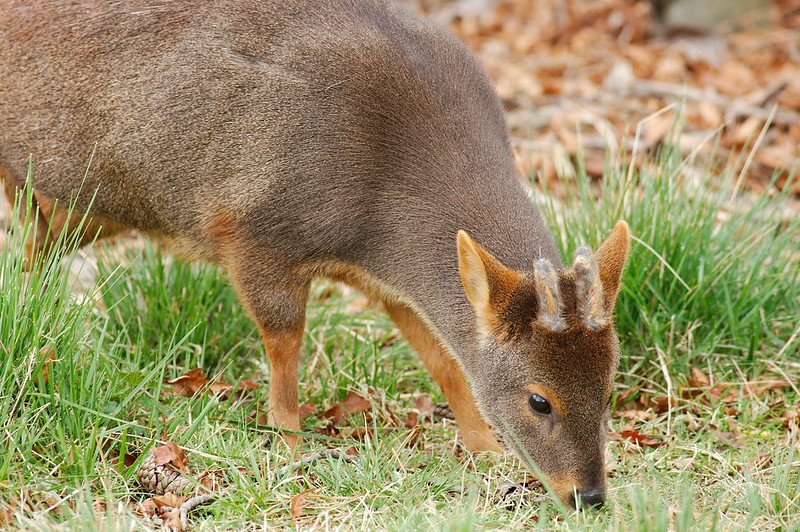- Headwaters are vital to ecosystem health and have been difficult to study, but now a group of researchers has developed a new method that relies on remote sensing to assess headwater vulnerability at multiple scales.
- Using the method, they assessed 2,292 headwaters in south-central Chile and found nearly two-thirds of the headwaters were affected by climate change and 23% by land use and land cover change; all of the headwaters were experiencing drought conditions.
- Chile has been in the grip of a megadrought for more than a decade now, with precipitation in south-central Chile decreasing by nearly 40% since 2010. Experts say water management suffers under water privatization, enshrined by the 1980 Constitution.
- Chile and Argentina host the only temperate rainforests in South America, with high levels of endemism, but nearly half of the native forests in the coastal zone of central-southern Chile have been replaced by tree plantations.
Follow any river to its upper reaches and you will encounter the headwaters, the flowing streams that join to carry water, nutrients and life to downstream ecosystems and economies. Troubles here, at the river’s origins, quite literally trickle down.
Headwaters are complex and notoriously difficult to study, but given their vital role, understanding where and how they are vulnerable is critical to making conservation decisions.
A group of researchers from Chile and Bolivia developed a new method that relies on remote sensing to assess headwater vulnerability. Using the method, they assessed 2,292 headwaters in south-central Chile.
According to their analysis, published in Science of The Total Environment, nearly two-thirds of the headwaters were affected by climate change, mostly in the Andean and coastal regions, and 23% by land use and land cover change, primarily in the north. The most vulnerable headwaters were concentrated in Chile’s Araucanía region. All of the headwaters were experiencing drought conditions.
“We found that all of the headwaters are drier, even those in protected areas and those not impacted by deforestation,” Alberto Alaniz, the lead author of the study from the University of Santiago, Chile, told Mongabay.
Using Google Earth Engine, Alaniz and colleagues examined 17 variables representing land use change, climate change, human disturbance, vegetation cover, potential water demand, and slope for each of the headwaters at multiple scales. With this method, researchers can zoom in and look at headwaters close up, which is useful for planning restoration, or zoom out and look at the big picture for more regional or national planning.
“Using this tool of Google Earth Engine, others can a run our codes and do a similar assessment,” Alaniz said.
“Headwater streams … are key to the ecological health of rivers and the waterbodies they drain into,” Stephen Hamilton a professor of ecosystem ecology and biogeochemistry at Michigan State University, who was not involved in the research, told Mongabay in an email. “The results of this study are relevant to policymakers thinking about how best to protect headwater streams through incentives and legislation, and to stream restoration programs that need to decide where to focus their resources.”

Chile, Alaniz said, is an ideal place to conduct this study, not only because of the hundreds of headwaters but also because it’s experiencing the dual pressures of deforestation and climate change.
Chile has been in the grip of a megadrought for more than a decade now. In south-central Chile, precipitation has decreased by nearly 40% since 2010. Climate change is a culprit, but also, Alaniz said, Chile has a problem with water management owning to privatization of water rights that began under the Pinochet dictatorship when the 1980 Constitution enshrined the private ownership of water. Water issues are also worsened by climate change.
“Climate change presents a new and uncertain stressor for headwater streams,” Hamilton said. “This is especially true in the case of prolonged droughts, which not only reduce the amount of water entering streams but also may increase [the] demand for extraction of water for irrigation.”
Deforestation in Chile has been ongoing for more than a century, but revved up in the 1970s and ’80s, under the country’s dictatorship when nearly half of the native forests in the coastal zone of central-southern Chile were replaced by pine and eucalyptus species grown for paper manufacturing and timber. These tree plantations accounted for 43% of the south-central Chilean landscape by 2014.
“We have a lot of concerns about what will be the future of our food production systems, and the future of our body biodiversity,” Alaniz said. “Water privatization and the exotic pine plantations are destroying our biodiversity.”

Chile and Argentina host the only temperate rainforests in South America. These geologically isolated forests have extremely high levels of endemism, with more than 90% of seed plants there found nowhere else on Earth. WWF and Conservation International have recognized these forests as priority conservation areas.
“The international community should know that here in Chile we have a severe problem with water scarcity,” Alaniz said. “We have a severe problem with ecosystem conservation. Our country needs to advance to face this new century … we are very worried about this.”
Banner image: Salto Grande Waterfall in Chile by Chris Ford via Flickr
Liz Kimbrough is a staff writer for Mongabay. Find her on Twitter: @lizkimbrough_
Citation:
Alaniz, A. J., Smith-Ramírez, C., Rendón-Funes, A., Hidalgo-Corrotea, C., Carvajal, M. A., Vergara, P. M., & Fuentes, N. (2022). Multiscale spatial analysis of headwater vulnerability in South-Central Chile reveals a high threat due to deforestation and climate change. Science of The Total Environment, 849, 157930. doi:10.1016/j.scitotenv.2022.157930
FEEDBACK: Use this form to send a message to the author of this post. If you want to post a public comment, you can do that at the bottom of the page.











